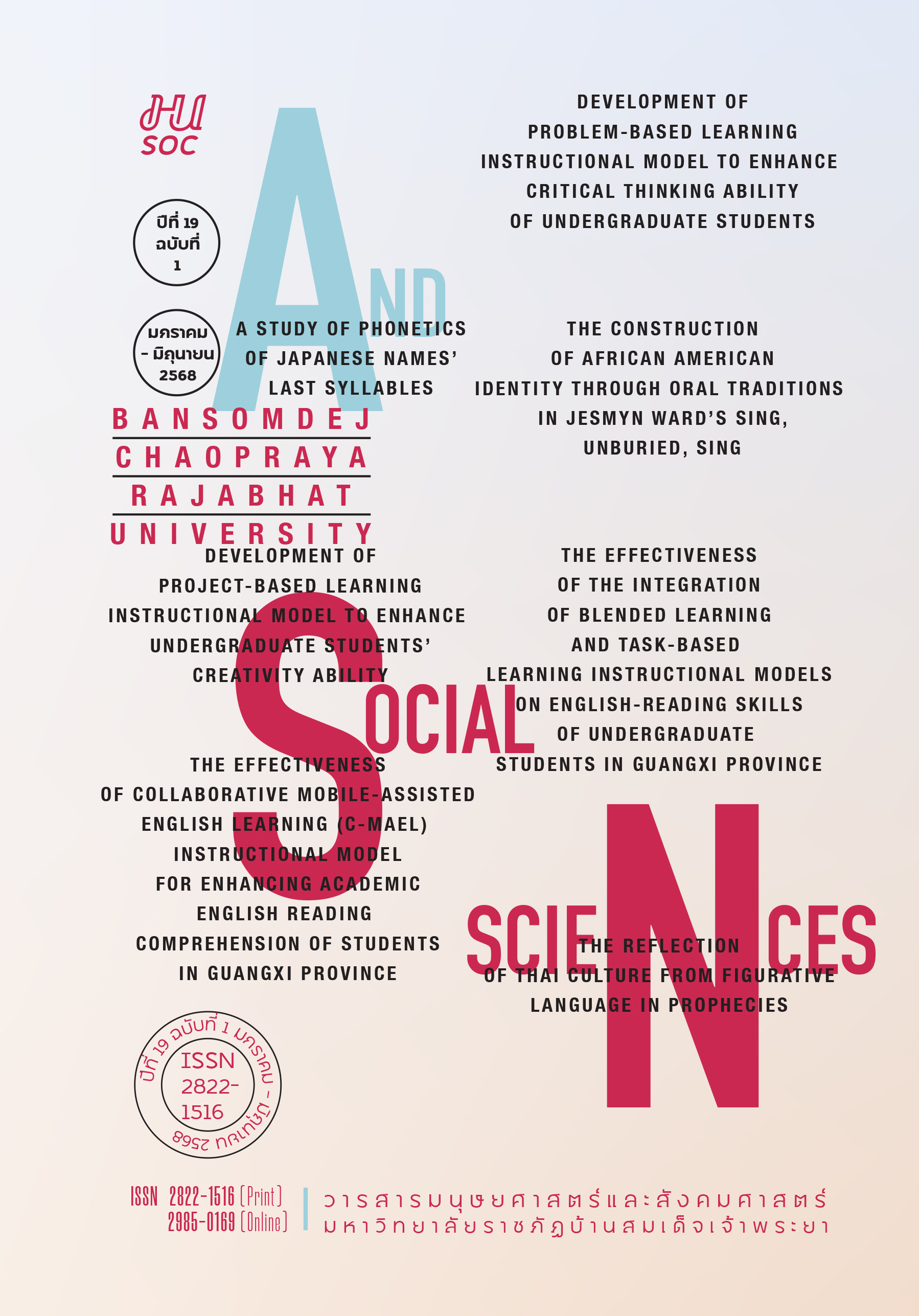ประเด็นท้าทายในการให้ความคุ้มครองเครื่องหมายการค้ารสชาติ
คำสำคัญ:
เครื่องหมายรสชาติ, เครื่องหมายที่ไม่สามารถมองเห็นได้ด้วยตา, เครื่องหมายการค้ารูปแบบใหม่บทคัดย่อ
เครื่องหมายการค้ารสชาติเป็นหนึ่งในลักษณะของเครื่องหมายการค้ารูปแบบใหม่ที่ไม่สามารถมองเห็นได้ด้วยตาที่ได้รับความคุ้มครองภายใต้กฎหมายเครื่องหมายการค้าในหลายประเทศ อย่างไรก็ตาม ในทางปฏิบัติ พบว่า ไม่มีประเทศใดสามารถจดทะเบียนเครื่องหมายการค้ารสชาติดังกล่าวได้ การวิจัยครั้งนี้มีวัตถุประสงค์เพื่อศึกษาหลักเกณฑ์ที่เป็นปัญหาและอุปสรรคในการให้ความคุ้มครองเครื่องหมายการค้ารสชาติเพื่อเสนอแนวทางการแก้ไขกฎหมายและกฎเกณฑ์ที่เกี่ยวข้องเพื่อให้ความคุ้มครองเครื่องหมายการค้ารสชาติอย่างเหมาะสม ผ่านวิธีการศึกษากฎหมายเปรียบเทียบ โดยเปรียบเทียบการให้ความคุ้มครองเครื่องหมายการค้ารสชาติตามกฎหมายของสหรัฐอเมริกากลุ่มสมาชิกสหภาพยุโรป ประเทศอังกฤษ สาธารณรัฐอินเดีย และประเทศไทย ผลการวิจัยยังพบช่องว่างทางกฎหมายในการขอจดทะเบียนเครื่องหมายการค้ารสชาติยังเกิดข้อจำกัดและอุปสรรคต่อการรับจดทะเบียนเครื่องหมายการค้ารสชาติอันจะส่งผลต่อข้อจำกัดในการพัฒนาเครื่องหมายการค้ารูปแบบใหม่ประเภทต่าง ๆ จึงจำเป็นต้องศึกษาหลักเกณฑ์ในการให้ความคุ้มครองอย่างชัดเจนเพื่อกำหนดขอบเขตการให้ความคุ้มครอง โดยพิจารณาจากหลักเกณฑ์ในการกำหนดคำนิยาม ลักษณะบ่งเฉพาะ การแสดงออกซึ่งหน้าที่ของเครื่องหมายการค้า รวมไปถึงการพิจารณาหลักเกณฑ์ในการแสดงออกที่เป็นรูปธรรม ด้วยเหตุนี้ จึงเสนอให้มีการแก้ไขบทบัญญัติมาตรา 4 แห่งพระราชบัญญัติเครื่องหมายการค้า พ.ศ. 2534 และคู่มือพิจารณาคำขอรับจดทะเบียน ฉบับปี พ.ศ. 2565 เพื่อให้การให้ความคุ้มครองเครื่องหมายการค้ารสชาติและเครื่องหมายการค้ารูปแบบใหม่ประเภทอื่นเป็นไปอย่างมีประสิทธิภาพ
References
Baird, S. (2014). When is a flavor/taste trademark possible?. Retrieved December 27, 2024. https://www.duetsblog.com/2014/10/articles/trademarks/when-is-a-flavortaste-trademark-possible/
Bhagwan, A., Kulkarni, N., & Ramanujam, P. (2007). Economic rationale for extending protection to smell marks. https://doi.org/10.2139/ssrn.1027281
Bolte, J. (2016). The removal of the requirement for graphical representation of EU trade marks: The impact of the amending trade mark regulation. Retrieved December 18, 2024. https://oru.diva-portal.org/smash/get/diva2: 1072679/FULLTEXT01.pdf
Carapeto, R. (2016). A reflection about introduction of non-traditional trademark. Waseda Bulletin of Comparative Law, 34, 25-60. Retrieved December 18, 2024. https://www.waseda.jp/folaw/icl/assets/uploads/2016/02/c35688e10d1c61201172065546b98301.pdf
Chanpiew, K. (2014). Distinctive character of sound and scent trademarks. [Master’s thesis, Bangkok University]. [In Thai]
Department of Intellectual Property. (2022). Handbook for trademark registration in Thailand B.E. 2565. [Government publication]. [In Thai]
Hobbs, M. D. (2007). Orange flavor is no trademark. The National Law Journal. Retrieved December 20, 2024. https://www.troutman.com/insights/orange-flavor-is-no-trademark.html
Lhalainen, J. (2014). One taste to rule them all: Can you trademark a flavor? IPIustitia. Retrieved December 27, 2024. https://www.ipiustitia.com/2014/11/
Little, J. (2016). Can you trademark the taste of food? Retrieved December 27, 2024. https://www.briffa.com/blog/can-you-trademark-food-taste/
Methaprayoon, W. (2019). Protection of gustatory mark in Thailand. [Master’s thesis, Chulalongkorn University]. [In Thai]
Muangmanee, A. (2009). Protection for sound and scent trademarks in Thailand: Effects of the proposed free trade agreement between Thailand and the United States of America. [Master’s thesis, Thammasat University]. [In Thai]
Ongpaisarn, T. (2013). The protection of scent trademarks. [Master’s thesis, Chulalongkorn University].
Palsule, M., & Lakhani, N. (2020). India: Conventionalisation of non-conventional trade marks. E-Journal of Academic Innovation and Research in Intellectual Property Assets (E-JAIRIPA), 1(1), 67–84.
Samitimetha, N. (2017). Distinctiveness of position mark under trademark law of Thailand. Ramkhamhaeng Law Journal, 6(2), 83–96.
Thampanichawan, A. (2006). Trademark protection: Case study of sound, olfactory, and gustatory marks. [Master’s thesis, Dhurakij Pundit University]. [In Thai]
World Intellectual Property Organization (WIPO). (2006). New type marks. (Standing Committee on the Law of Trademarks, Industrial Designs and Geographical Indications 16/2). Geneva.
Downloads
เผยแพร่แล้ว
How to Cite
ฉบับ
บท
License
Copyright (c) 2024 คณะมนุษยศาสตร์และสังคมศาสตร์ มหาวิทยาลัยราชภัฏบ้านสมเด็จเจ้าพระยา

This work is licensed under a Creative Commons Attribution-NonCommercial-NoDerivatives 4.0 International License.



